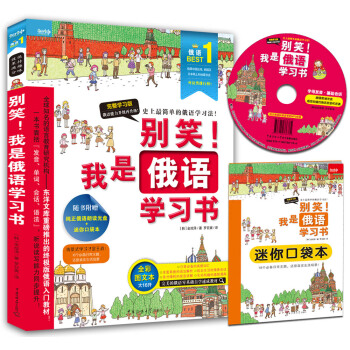

具体描述
产品特色
编辑推荐
适读人群 :准备参加雅思考试的考生以及想提高英语水平的读者《新东方雅思阅读》汇集了新东方雅思培训经验的精华,新东方及国际知名雅思专家强强联手,倾力打造符合中国雅思考生学习特点的培训教材。由资深国际语言专家RodEllis亲自作序,并担任总顾问,对教材编写予以指导;新东方教育科技集团雅思研究院院长周成刚亲自审订。
《新东方雅思阅读》根据雅思考试新趋势,全面覆盖雅思考试阅读部分各种题型,提供多样练习形式及技巧点拨,供考生短时高效备考。既可以作为课堂培训使用,也可以作为考生自学使用,配合剑桥雅思真题学习,效果更佳。
内容简介
《新东方雅思阅读》收录了雅思阅读考试涉及的核心话题,结合考试流程进行讲解,详细介绍了阅读考试各部分的回答策略和技巧。《新东方雅思阅读》共有20个单元,全面覆盖雅思考试阅读部分的各种题型。收录雅思考试阅读部分的常见话题,每个单元中还归纳了相关词汇,详解答题技巧。不仅提供了多样的练习及技巧点拨,帮助考生高效备考;还提供精准的答案,帮助考生自学自测,有效提高阅读水平。
作者简介
新东方教育科技集团雅思研究院,由众多新东方雅思名师组成,致力于雅思考试的研究工作,著有《雅思写作》、《雅思听力》、《雅思阅读》、《雅思口语》等多本畅销图书。目录
Unit 1 Education 2Unit 2 Food
Unit 3 Health
Unit 4 Media
Unit 5 Practice 1
Unit 6 Advertising
Unit 7 Learning to Speak
Unit 8 The Environment
Unit 9 Sponsorship
Unit 10 Practice 2
Unit 11 Transport
Unit 12 Travel
Unit 13 Technology
Unit 14 Money
Unit 15 Practice 3
Unit 16 Commodities
Unit 17 Social Issues
Unit 18 Drugs and Sport
Unit 19 Communication
Unit 20 Practice 4
Answer key
前言/序言
Overview (概论)This book covers the following points:
Reading Topics and Styles
Topics which are often seen in the IELTS reading test. For example:
technology, the environment, psychology, human biology, science, history, sport, medicine, the media, advertising
Common styles of IELTS reading passages
Narrative, description and argument styles. Articles are written in newspaper, journal and/or magazine style and are mostly at a level for an educated, general audience.
Vocabulary
Exercises to help you to recognise and learn useful vocabulary for the reading texts. Strategies for dealing with unknown vocabulary in the reading texts.
Strategies and Practice for Answering the IELTS Reading Question Types
All of the IELTS reading question types are covered in this book. The book provides:
Practice exercises for each question type
Helpful hints for approaching each question type
Practice Activities for Reading Quickly to Understand the Main Idea
This is a KEY skill for success in the IELTS reading test. Each unit provides activities to help you to understand the main ideas BEFORE you begin the IELTS style reading questions.
Practice Units
Units 5, 10, 15 and 20 of this book are practice units. In these units you will practise reading and answering questions.
There are two reading passages in each Practice Unit, and each passage has about 25 questions. In the real IELTS test, there are three reading passages and each one has about 15 questions. The total number of questions in a real IELTS test is approximately 40.
Extension activities
These activities are designed to provide further vocabulary practice, or to help you to understand the organisation of the passage more clearly.
We hope you will enjoy using this book, and that you will learn useful language and skills to help you to pass the IELTS reading test.
序一:
Dear Student,
Welcome to this IELTS preparation course and the Reading Book in particular.
IELTS, the International English Language Testing System, is one of the world’s most popular English language tests for entry into university or higher education where English is the language of communication. In other words, it is your academic passport!
The most difficult challenge you will face in the Academic Reading Test is the enormous amount of unknown vocabulary. In this book you will learn a lot of frequently used academic words but, more importantly, you will learn strategies for managing unknown vocabulary. Each unit has extensive activities to help you develop your English vocabulary because a wide vocabulary base is one of the keys to success in the reading exam.
The exercises in this book have been created to give you practice in all the essential reading skills as well as the strategies you will need to answer the different kinds of questions in the test.
Topics in this book have been chosen because they are interesting, appropriate and typical. You will also study the common writing styles (narrative, description, argument) which are presented in reading passage materials in the IELTS exam.
Congratulations on choosing to study IELTS with New Oriental.
Ready? Let’s go!
Rod Ellis
第二语言教学之父
Task Base教学法创始人
序二:
Dear Student,
Thank you for choosing to study for the IELTS with New Oriental.
This book is the long anticipated result of a close cooperation between New Oriental and international IELTS experts to develop our own IELTS training materials. We believe it offers a different approach, with the following features:
First of all, the language used is likely what you will encounter in a real classroom or work setting while living abroad. The setting of each dialogue is also consistent with how you might encounter English as used by native speakers in their own country.
Also, under the guidance of renowned professor Rod Ellis, our partner international research team has delivered a proven methodology for ensuring the intended acquisition of needed skills for IELTS test takers in speaking, listening, reading and writing.
And most importantly, this book incorporates ten years of IELTS training experience by the very best teachers at New Oriental, and therefore has been customized to suit the needs of Chinese students.
I sincerely hope that together with these materials New Oriental teachers can make your IELTS classroom fruitful and rewarding. Enjoy your learning time with New Oriental!
周成刚
新东方教育科技集团
用户评价
坦率地说,市面上很多备考资料在“听力”和“写作”上做得不错,但“阅读”部分往往沦为粗制滥造的堆砌,但这本书在细节处理上体现了极高的专业水准。首先是它的词汇表设计,它没有采用那种死板的A-Z排序,而是根据高频出现在不同主题文章中的核心词汇进行分类。比如,专门有一个板块整理了“环境科学类文章中常见的动植物名称和相关术语”,这对于针对性复习非常有效,避免了背诵无关词汇的精力浪费。其次,它的排版对眼睛非常友好,墨水浓淡适中,纸张的厚度也很有质感,长时间阅读下来眼睛不容易疲劳。这一点很重要,因为阅读复习往往是高强度的过程。最让我惊喜的是它在最后附带的“模拟考试环境下的时间管理策略”。它详细分析了不同题型(如匹配题、填空题、选择题)应该分配的时间比例,甚至给出了“做完Section 1后剩余时间分配”的建议。这种对实战节奏的把控,让我不再是盲目地与时间赛跑,而是有计划、有节奏地推进答题过程。它不仅教你怎么做题,还教你怎么“打一场漂亮的阅读仗”。
评分这本书给我的感觉是,它完全理解了非英语母语学习者在面对英联邦教育体系测试时的文化和认知障碍。它不仅仅是语言工具书,更像是一本“跨文化阅读指南”。我过去做题时,经常因为不了解某些英美文化的背景知识而对文章中的某些隐含意义产生误判。这本书在这方面做得非常到位,它在解析某些历史或社会话题的文章时,会适当地补充相关的背景知识小贴士(Side Notes),帮助我们理解文章的文化基石,而不是仅仅停留在句子层面。这种“背景知识补给”极大地提升了我对阅读材料的接受度。另外,它的语言风格非常鼓励人,作者的语气是充满建设性的批评,而不是居高临下的指责。比如,当分析一个常见的错误类型时,它会说“很多同学会在这里犹豫,这是因为……,我们可以换个角度想……” 这种共情式的引导,让学习过程变得更加积极。总而言之,这本书的价值在于它构建了一个全面的、立体化的阅读支持系统,它关注的不仅是分数上的提高,更是学习者思维方式的转变。对于希望在雅思阅读中追求高分并真正提升自己学术阅读能力的考生来说,这本书是不可多得的精品。
评分这本阅读指南的独特之处在于它对“学术阅读习惯养成”的强调,这才是与其他市面上单纯刷题的资料拉开差距的关键。我过去看那些英文原版材料,总是习惯性地从头读到尾,效率极其低下,而且一旦遇到生词就容易卡壳,导致抓不住重点。这本书很早就点醒了我,学术文章的阅读逻辑和我们日常的休闲阅读是完全不同的。它用非常犀利的笔触剖析了学术文章的“套路”——比如论点句的位置、转折词的信号作用,以及如何高效地进行“扫读”(Skimming)和“略读”(Scanning)。书中提供的那些针对特定题型的“定位词模板”非常实用,我以前总觉得定位词就是随便找几个关键词,但这本书教你如何筛选出真正有效的“锚点”。看完前几章的阅读策略训练后,我尝试去阅读一些经济学人(The Economist)的文章,惊讶地发现我能在大段文字中快速锁定作者支持或反对的观点,这在考场上简直是救命稻草。更值得称道的是,它对各种阅读材料(如历史、自然科学、社会科学)的语言特点进行了细致的分类说明,让我知道不同领域的阅读侧重点在哪里。这本书不是教你如何“应试”,而是真正培养你作为一名准留学生所需的学术阅读能力。
评分我个人对那种只有大量真题重组的复习资料感到非常乏味,但这本书却带来了耳目一新的体验。它的内容设计更像是一本进阶的“阅读思维训练手册”,而不是简单的题库。让我印象最深的是它对“逻辑关系词”的深度挖掘。我们都知道“and”、“but”很重要,但这本书深入到“in contrast to”、“subsequently”、“provided that”这类更高级的逻辑连接词对整个段落乃至篇章结构的影响。作者会列举一句话,然后故意替换掉一个逻辑词,让你对比理解句意是如何发生微妙甚至颠覆性的变化的。这种对比训练,极大地增强了我对长难句的理解精度。此外,这本书在讲解过程中大量穿插了一些“反例分析”,比如“为什么这个选项看起来很对,但实际上却偷换了概念”。这种“剥洋葱”式的解析,让我明白了雅思阅读的陷阱设置是多么精妙,而我的弱点又在哪里。对于那些已经有一定基础,但分数始终在6.5徘徊不前的考生来说,这本书提供的精微洞察力是突破瓶颈的关键。它让你从“看懂字面意思”升级到“理解作者深层意图”。
评分这本书简直是为我这种雅思小白量身定做的救星!我之前对阅读部分的焦虑感简直爆棚,感觉那些长难句就是天书,生词更是铺天盖地,做一套题下来能用掉我半个小时查字典。拿到手翻开这本书,首先映入眼帘的是那种非常清晰的排版,不会让人觉得信息量过大而产生压迫感。它的章节划分非常科学,从最基础的词汇积累和句子结构分析入手,循序渐进地引导你进入不同的题型训练。特别是它对那些绕来绕去的主旨题和细节定位题的讲解,简直是醍醐灌顶。作者没有那种高高在上的理论说教,而是用非常接地气的语言,一步步拆解考官的出题思路,让你明白“原来他们是这么想的!”。我尤其喜欢它在每个模块后设置的“错题分析区”,里面详细列出了常见的错误选项和正确选项的对应关系,让我能立刻明白自己错在哪里,而不是一扫而过。自从开始用这本书做系统练习后,我的阅读速度明显提升了,最重要的是信心上来了,不再是机械地猜答案,而是真正理解了文章的逻辑脉络。这本书的实战价值远超其价格,绝对是准备雅思阅读的必备良器,强烈推荐给所有还在阅读泥潭中挣扎的朋友们。
评分书不错,都是英文的,适合教学,很基础!
评分汉 语:我来打酱油。
评分昨天早上买的今天早上就到了,东西保护的很好
评分荷 兰 语:ik gerelateerd wat, kwam ik tot een sojasaus.
评分66666666
评分质量好,正品
评分德 语:ich bezogen, was ich kam zu einer soja-so?e.
评分吾消费京东商城数年,深知各产品琳琅满目。然,唯此宝物与众皆不同,为出淤泥之清莲。使吾为之动容,心驰神往,以至茶饭不思,寝食难安,辗转反侧无法忘怀。于是乎紧衣缩食,凑齐银两,倾吾之所有而能买。东哥之热心、快递员之殷切,无不让人感激涕零,可谓迅雷不及掩耳盗铃儿响叮当仁不让世界充满爱。待打开包裹之时,顿时金光四射,屋内升起七彩祥云,处处皆是祥和之气。吾惊讶之余甚是欣喜若狂,呜呼哀哉!此宝乃是天上物,人间又得几回求!遂沐浴更衣,焚香祷告后与人共赏此宝。人皆赞叹不已,故生此宝物款型及做工,超高性价比之慨,且赞吾独具慧眼与时尚品位。产品介绍果然句句实言,毫无夸大欺瞒之嫌。实乃大家之风范,忠义之商贾。
评分新东方的雅思值得信赖,包装很好,虽然邮政快递池很快!但愿能很好!
相关图书
本站所有内容均为互联网搜索引擎提供的公开搜索信息,本站不存储任何数据与内容,任何内容与数据均与本站无关,如有需要请联系相关搜索引擎包括但不限于百度,google,bing,sogou 等
© 2025 book.cndgn.com All Rights Reserved. 新城书站 版权所有







![80天攻克雅思(阅读 第四版) [Ielts In 80 Days: Reading] pdf epub mobi 电子书 下载](https://pic.qciss.net/12013570/57b44265Nfecdecde.jpg)
![学生实用高中英语语法指南与实践(第8版) [With Exercises for Senior Middle School Students] pdf epub mobi 电子书 下载](https://pic.qciss.net/11479043/53a6327fNbc46145f.jpg)











